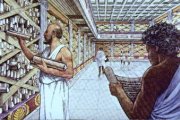Life & English
It is free download from Aug 1st 2017 to Sep 30th 2017. This is a gift to young readers from author
Here is the list of 15 most popular social networking site and apps and their monthly visitors
(ICTPress) - Nội dung bản sao cuốn nhật ký đã được trao trả cho gia đình liệt sỹ từ trước, nhưng tập bản thảo gốc dịch tiếng Anh Carl W. Greifzu vẫn giữ trong suốt hơn 30 năm.
This city is among the wealthiest cities in the United States.
Of the ten tallest buildings in the United States, four are located in Chicago.
In United States, people honor this day with parades, fireworks and celebrations.
He was the architect of the famous architecture Fallingwater, which has been called "the best all-time work of American architecture".
All of the museums offer free times or days and 10 of the museums are free all the time. Visitors can see schedules of Museums on internet and select the best choice.
We saw the Post at a corner in Calico Ghost Town. Wow. It was a special memory of Post, the oldest communication service.
E-books are convenient for storage needs, search and read books anytime, anywhere on the device personal information, such as smartphones, tablet... How will be traditional paper books?
I found some old telephone boxs of Telstra on Sydey downtown…












